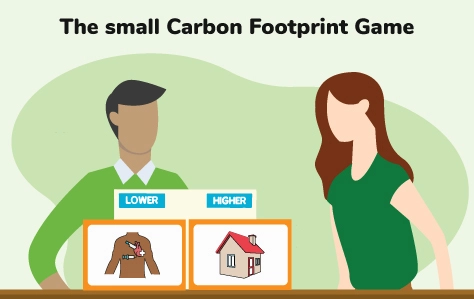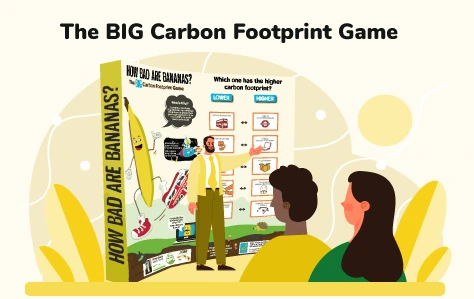Something we love at Future We Want is how we are always learning and improving our knowledge.
We were asked the other day why a kilogram of oranges has a higher carbon footprint than a kilogram of bananas when they both have similar properties and similar carbon footprint journeys.
The short answer was, we didn’t have one (we could have a fair guess!), the longer answer was, lets write a blog and work through the answer together.


We use Mike Berners-Lee’s ‘How Bad Are Bananas’ book to define a carbon footprint. A carbon footprint is the total greenhouse gases and therefore impact a product, service or activity has on our planet. As lots of different greenhouse gases can be released by one product or activity to capture the impact as accurately as possible we use the measurement CO2e, which means carbon dioxide equivalent.
The main contributors to both fruits carbon footprints are; where it’s grown, transport to our shelves and the production and packaging involved.
The journey begins:
The carbon footprint journey of both fruit begins in warm climates. Bananas and oranges are grown in natural conditions in countries a lot warmer than the UK. They get all their energy from the sun meaning no extra energy is needed from hothouses to help them grow.
At this point both fruit have small carbon footprints.
How they are grown:
Both fruits are also often grown in monoculture which means they require intense chemical fertilizers, pesticides and herbicides which have negative effects on soil health, water pollution and air pollution. However, the concern over our favourite fruits being wiped out has led to banana production being grown in systems that are more diverse and incorporate undergrowth and other crops to create a more sustainable ecosystem.
Oranges also require more water than bananas as they are more sensitive to dry conditions. This increase in water during the production stage could also be attributed to the higher carbon footprint.
Getting to Britain:
The oranges we get in the UK are mainly from South Africa or Spain and our bananas usually come from South America or Southeast Asia. These fruits are usually transported by boat which creates a really low carbon footprint- travelling by boat is about 1% of the carbon footprint compared to air travel!
However, some supermarkets transport oranges using aeroplanes. Flying is very carbon intensive as it releases a lot of CO2 into the atmosphere. Some oranges are even transported by road, especially if they are only travelling the ‘short’ distance from Europe. Whilst not as carbon intensive as flying this still releases a lot more CO2 into the atmosphere than if they travelled by boat.
Another reason for the orange having larger carbon footprint is the weight of the fruit. Oranges are heavier than bananas, meaning more fuel is required to transport them, which again increases the amount of greenhouse gases being released and therefore increases the carbon footprint.
Keeping our fruit safe:
Bananas and oranges are super fruits as they come with their own packaging. This should mean the carbon footprint created from the packaging of both fruits is exactly the same- Zero, as there is none!
However, nothing is ever that simple. Unfortunately, there are still a lot of bananas being sold in plastic packaging and oranges being sold in non-biodegradable nets or carboard boxes. The best option is to let these fruits use their natural packaging and opt for loose fruit.
So, after comparing the journey of both an orange and a banana we can assume the slightly larger carbon footprint of the orange is due to more carbon dioxide being released during their transport to the UK and more greenhouse gases released as the growing process of oranges is slightly more energy intensive.
However, when we compare similar items, it is not about finding out the nitty gritty of why there is a tiny difference (0.005 CO2e), but what can we learn from these numbers being so similar.
It’s impossible to know the carbon footprint of everything on earth, but it is possible to create a carbon instinct when buying products to help us make planet friendly choices.
Good carbon instinct fruit checklist:
- Grown in natural conditions (no greenhouse needed)
- Have their own packaging
- Transported by boat (or grown seasonally in the UK)
So next time you are in a supermarket we challenge you to use your carbon instinct and consider where your items have come from and if you can make a more carbon friendly swap.
This blog post has been written using the How Bad Are Bananas’ Carbon Footprint Game cards:
- 1kg of oranges
- 1kg of bananas








